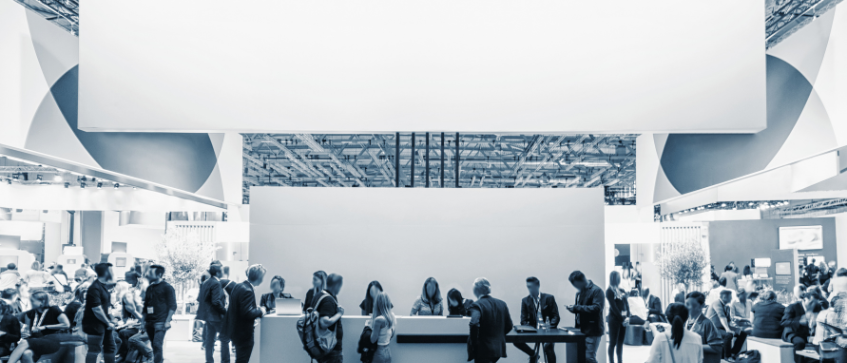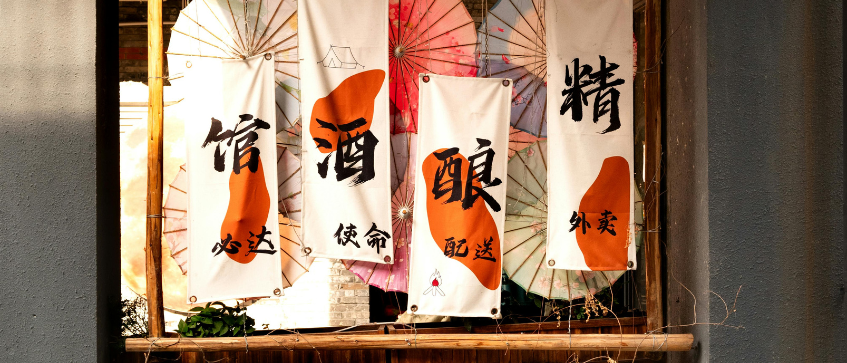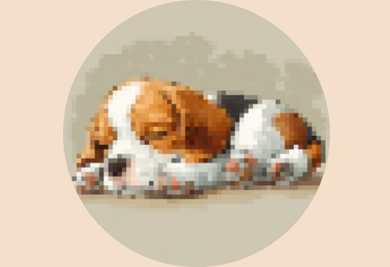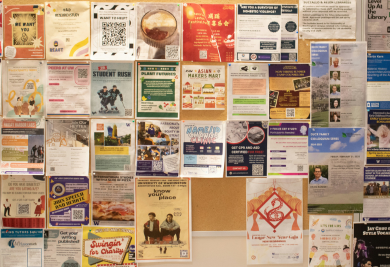In today’s face-paced digital world, many marketers and businesses overlook the lasting impact of physical marketing. But physical prints and large format printing remain crucial for trade shows and event marketing to create high brand visibility and awareness. Especially large format printing like trade show banners and branded backdrops at press events, their considerable size provides businesses with immense presence and attraction for potential customers.
This guide is designed for SME business owners, marketers and event planners who want to learn more about large format printing or those who want to deepen their understanding of large format printing. We’ll include design tips, industry data and real insights from our work at Gogoprint to help you make informed decisions about selecting the best format for your event.

1. What is Large Format Printing (LFP)? (But Let's Go Deeper)
As the name suggests, large format printing refers to marketing materials with images or information that are larger than standard sizes, thus requiring specialized printers to fit larger paper sizes and expanded printing areas. Wide format printing generally describes any type of large scale printing, regardless of dimensions. While large format printing are prints with dimensions bigger than 36 inches (width / height). Hence all wide format printing can be considered large format printing but not vice versa.
2. Common Use Cases for LFP in Marketing
Generally large scale prints are mostly commercial where visual impact is key, so not limited to usage in marketing, signages, events, but also used in construction or wayfinding. Some common printing examples are banners, backdrop printing, posters, wall / window decals and even standees. These large sized prints provide high brand visibility, unique versatility in applications and lasting durability to match their high quality. These prints’ printing process differs from standard printers due to the diverse techniques, tools and materials used.
3. Choosing the Right Material and Print Technology
Understanding the basics of materials and printing methods help avoid costly mistakes and optimize print outcomes. For outdoor usage, water and UV-resistant materials like PVC vinyl or mesh banners printed with solvent or eco-solvent ink are top choices. For indoor prints, especially for prints needing close contact (e.g. retail displays or fabric backdrops for events / photobooths), latex and dye sublimation printing on fabric or synthetic paper produces vibrant colours and eco-friendly results.
Common Print Technology:
1. Solvent Printing
This versatile solvent ink replaces aqueous ink traditionally used for printing to dissolve and bind well with various substrates, vinyl and plastics.
Pros: Bold colours and durable graphics printed on variety of surfaces and materials
Applications: Window wraps, flexible banner displays, floor decals
2. Eco-solvent Printing
A greener alternative to traditional solvent printing, this method utilizes mild and bio-degradable solvent inks, delivering vibrant, long-lasting results without the harsh chemical odour.
Pros: Eco-friendly and high-quality printing perfect for eco-conscious brands
Applications: Outdoor signages, vehicle wraps and custom wall decals
3. UV Printing
UV printing uses ultraviolet light to instantly dry or cure the ink or adhesives used in the printing material. UV-curable ink also reduces the need for lamination in custom banners, thus being one of the most popular choices of direct printing on any rigid material, like acrylic, foam boards or wood .
Pros: Quick production, cost-effective and durable
Applications: Banners, exhibition graphics, pop-up displays
4. Latex Printing
One of the more popular methods commercially, this water-based method requires special heaters to quickly bind the ink to the materials and dry after printing. Their vibrant results also eliminates the need for lamination for short-term use, helping businesses save both time and money.
Pros: Eco-friendly inks, vivid colours and suitable for both indoor and outdoor use
Applications: Soft signages, wallpapers, vinyl banners, retail graphics
5. Dye-sublimation Printing
Heat is first used to transfer dyes onto sheets of transfer paper before converting the dyes to a gaseous form. As the heat is removed, the dye returns to solid and fuses onto the materials to create a long-lasting print.
Pros: Suitable for fabric applications, no drying time required and small order friendly
Applications: PVC banners, fabric backdrops, flags
4. Industry Trends: Why LFP Demand Is Growing
The large format printing industry reached USD12.68 billion in 2025 and is forecast to reach USD 16.28 billion by 2030. (Source: Mordon Intelligence)
Several key trends are driving this growth:
- Increasing need of customised large format printing: Especially in textile and advertising industries who are looking to stand out and attract customers in a fast-paced and saturated environment.
- Rapid growth of UV and eco-solvent printing: Environmental sustainability remains a crucial criteria for businesses aiming for lower environmental impact without compromising on quality.
- Integration of automation and AI-powered software: allows for efficient work flow, reduces errors and optimizes ink usage to propel further market growth.
- Return of physical experiences: As events, exhibitions and retail shopping regain momentum post-pandemic, the need for attention-grabbing, and engaging large format prints goes on the rise.

5. Gogoprint Insights: What We See From Our Orders
Over the past 12 months, large format printing has been one of our fastest-growing categories across our core markets in Malaysia, Singapore and Thailand. In June 2025, LFP revenue increased by 57% compared to the same time last year. We observed clear spikes in demand for LFP especially products like roll ups and banners during key festive seasons, sales campaigns and event / business exhibitions. Notably, more SMEs and startups are making use of LFP for short-run promotions, thanks to cost-efficiency and quick turnaround that digital printing offers and no MOQ requirements – making large format prints more accessible than ever.
6. Technical Tips: Prepping Your File for Print
Preparing artwork for large format prints can be tricky due to their size, but following these tips will help ensure a smooth printing process:
- Always use CMYK colour mode: CMYK is the standard colour mode in printing so designing in CMYK helps avoid colour difference from screen to print and sets realistic expectations.
- Ensure minimal resolution of at least 150 DPI at actual print size: to ensure the design stays sharp and avoid pixelation during printing.This is important since large formats can be hard to visualise accurately on a smaller screen.
- Include sufficient bleed (usually 3-5mm) and safety margins to prevent important content from being trimmed off.
- Convert fonts to outlines or embed fonts to avoid missing text or layout shifts that could affect readability.
- Use vector formats (AI) for logos or key graphics: to ensure visuals stay sharp at any size. Using low-resolution graphics not only leads to pixelation but can also reduce the perceived professionalism and credibility of your brand.
- Take advantage of print templates when available: Most print providers offer templates tailored to their specs. These help simplify the design process and reduce errors, especially for oversized formats. Some printers even provide professional design services to ensure your artwork is perfectly prepared for print.
7. Practical Advice: Planning Your LFP Project
Often LFP takes a longer production lead time compared to other smaller print collaterals so it’s important to plan your large format prints ahead of time.
- Start with your goal – is the print for brand awareness, sales promotion or creating an experience? Clarifying this will guide your design, messaging and material choices.
- Work backwards from your deadline - Factor in time for concept development, design revisions, printing, delivery and installation (if needed).
- Choose your product material and size strategically. Determining your print purpose, location (weather exposure), duration and budget before consulting with your print partner about the selections will also be easier if your requirements are ready.
- Consult your print partner early about lead times, delivery and installation options – large format prints may require additional logistics and storage arrangements.
- Request a digital proof print when possible if colour accuracy is critical, especially for branded displays to avoid costly reprints or off-brand visuals.
8. Integrating LFP With Your Marketing Strategy
With their outstanding sizes, LFP are the focal point of any marketing campaigns and demand immediate attention in any busy space. For marketers, business owners, retail and event organisers, they act as physical touchpoints that reinforce your brand identity, communicate messages and create memorable experiences. Beyond their visual impact, they can be integrated with your digital campaigns whereby you can include QR codes to drive traffic to your landing page in your banners or roll ups.Large format prints work best when complementing small print marketing – for example, distributing flyers and brochures that guide intrigued customers to your event booth or front.
In 2025, personalised experiences are crucial for businesses and brands to stand out. Tailoring large format prints to specific locations, events or audiences allow brands to build deeper connections with their customers. Adding immersive elements such as branded pop-up backdrops or photo walls for your event booth not only attracts customers but encourages interaction, increasing visibility and engagement with your brand.
9. Final Thoughts: Why LFP Is Still a Smart Investment
Despite a focus on digital campaigns, large format printing still remains a vital part in marketing impact. Its unmatched visual impact, flexibility of formats and materials , and cost-effectiveness – especially in high-traffic or event-driven scenarios – makes it the top choice for brands seeking for visibility. With the right strategy, LFP can amplify digital efforts, reinforce brand presence, and deliver real-world engagement that’s hard to ignore.
Check out Gogoprint with our wide range of large format prints, from banners and roll-ups to standees and fabric backdrops. We offer a variety of sizes and materials, all fully customisable to match your needs. Need help with artwork? Our professional designers can also create or refind your design to ensure a seamless printing process. Print today to elevate your brand presence.





















